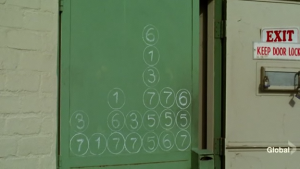The Beast is said to be the game that successfully introduced ARG’s to a larger public (Baertlein, 2008). This futuristic murder-mystery intrigued one million players for twelve weeks in 2001. It was created as a promotion for the movie A.I.
Another massive ARG was I Love Bees (aka Haunted Apiary) which was designed to support the launch of the video game Halo2 in 2004 (McGonical, 2007). This ARG revolved around an audio-drama broadcasted by public phones, immersing the player base into the world of Halo2. “The distributed fiction of I Love Bees was designed as a kind of investigative playground, in which players could collect, assemble and interpret thousands of different story pieces related to the Halo universe. By reconstructing and making sense of the fragmented fiction, the fans would collaboratively author a narrative bridge between the first Halo video game and its sequel” (McGonigal, 2007).
It had almost 10.000 people participating in real world challenges, and over 3 million players overall. The core website received 80 million hits, of which over 250.000 on the first day it went online. In the four months that the ARG ran, over 40.000 public phones spread over 50 states and 8 countries were answered (Dena, 2008). The players had to learn a fictional program language called Flea++ in order to complete the online challenges (McGonigal, 2004). The game created enormous media coverage with items in the New York Times, CNN, Wired and the London Times to name but a few. It also received the Innovation Award at the Game Developers Choice Awards 2005 (Dena, 2008).
An example of a smaller ARG is Chain Factor (Montola, Stenros & Waern, 2009). This puzzle based ARG started in the Numb3rs episode Primacy (aired first November 9th, 2007) in which players needed to find and crack several codes to stop the world’s economy from being destroyed. The Primacy episode featured short commercials to lure players to www.chainfactor.com and start playing with a fairly simple puzzle-game. Further game play included several clues and codes embedded in the Primacy episode and clues in physical locations (picture). Other codes that unlocked ‘cheats’ could be found on billboards throughout the country. On December 12, 2007 the game was successfully ended by entering all ‘ShutdownKeys’ simultaneously on twelve s computers in twelve different (physical) locations (Dena, 2008).
An ARG can be more than just fun. The first large ‘serious’ ARG was the World Without Oil that ran in 2007. The game revolved around the personal experiences of the players in a fictional, but realistic, global oil crisis. More than 1.500 player reports describing how they interacted with this ‘crisis’ were posted online. These reports include blogs, video files, audio files, images and voice mails. Almost 2.000 players registered at the core website www.worldwithoutoil.org, mostly from the United States. The game was played between the April 30th and June 1st 2007. When the game concluded the website had received more than 60.000 unique visitors. The game received several awards and a lesson plan for high school teachers to use the content created by the game (Dena, 2008).
This blog is a shaken but not stirred piece of my thesis “How ARG changes reality” which you can find here
Introducing Alternate Reality Games – blog 1 of 3
Alternate Reality Gaming – Ingredients – blog 2 of 3
Alternate Reality Gaming – Examples – blog 3 of 3


Pingback: Alternate Reality Gaming – Ingredients | Priscilla Haring